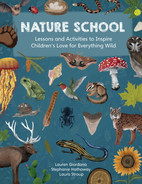Forests cover nearly one-third of our planet. They all have one thing in common: Forests have trees! In fact, without trees, a forest wouldn’t exist. Boreal forests are found in cold, northern regions around the globe while tropical forests grow close to the equator where the weather is warm and humid nearly all year long. Temperate forests thrive in areas that experience both cold winters and warm summers and have distinct seasons. So the trees, plants, and animals that are found in temperate forests must be adapted for a variety of conditions.
With rainfall spread fairly evenly throughout the year and soil teeming with nutrients, temperate forests provide the ideal ecosystem for many species to thrive. Large trees like oaks, maples, and walnuts dominate the landscape in the temperate forest. Their broad, green leaves gather sunlight during the spring and summer for photosynthesis and then change colors before falling to the ground during autumn. Other plants like mosses, herbs, and shrubs also grow in the temperate forest. And animals inhabit each forest layer, from beneath the ground all the way to the tops of the tallest trees. The temperate forest is something to be explored, from both the pages of a book and in nature itself.
THE TEMPERATE FOREST ECOSYSTEM
Temperate forests provide valuable habitat for many animal species around the world. They’re also brimming with flora that filter the air and provide oxygen, shade and cooling, timber products, and foods. This hospitable habitat is found around the world from eastern North America to parts of Europe and Asia.
Levels of the Forest

UNDERSTORY The understory is home to shorter tree species and large species that are not fully grown.
CANOPY The tallest trees in the forest receive the most sunlight and shade the layers below.
HERB LAYER Herbs are short, green, soft-stemmed plants that grow during the spring and summer and become dormant during the colder months.
THE FOREST FLOOR Carpeted in mosses, grasses, leaves, rocks, and fallen logs, the forest floor receives only little peeks of sunlight.
SHRUB LAYER Shrubs have woody stems that branch out and grow in a clump instead of a single trunk like a tree.
THE FOREST FLOOR: ROTTING LOGS
Most of the organisms you find when you look closely at a rotting log are the decomposers working to decay it. You might also find animals that are consuming the decomposers or looking for shelter.

CLIMATE AND WEATHER
Seasons of the Forest
- Winter often brings below-freezing temperatures and snow. Animals may be holed up in dens or exploring the barren forest. Others may migrate to warmer regions during this time.
- Spring’s warm-up leads to leaves growing on the trees while herbs that withered in the cold begin to surface with green stems and tiny, new leaves.
- Spring and summer rains encourage the trees and other plants to grow. Animals abound as those that left for winter are back and starting new families.
- As the amount of daylight decreases, and autumn approaches, the deciduous trees begin to drop their leaves. Animals prepare for winter by eating extra food, filling their caches, or looking for resources in warmer areas. Then winter returns, and the cycle begins again.
Looking at the climate of the temperate forest, you find four distinct seasons. The plants and animals that make this biome their home must be adapted to the changing weather conditions each season brings.
FUN FACT
Up to 60 inches (150 cm) of annual precipitation (in the form of rain and snow) is common in the temperate forest.
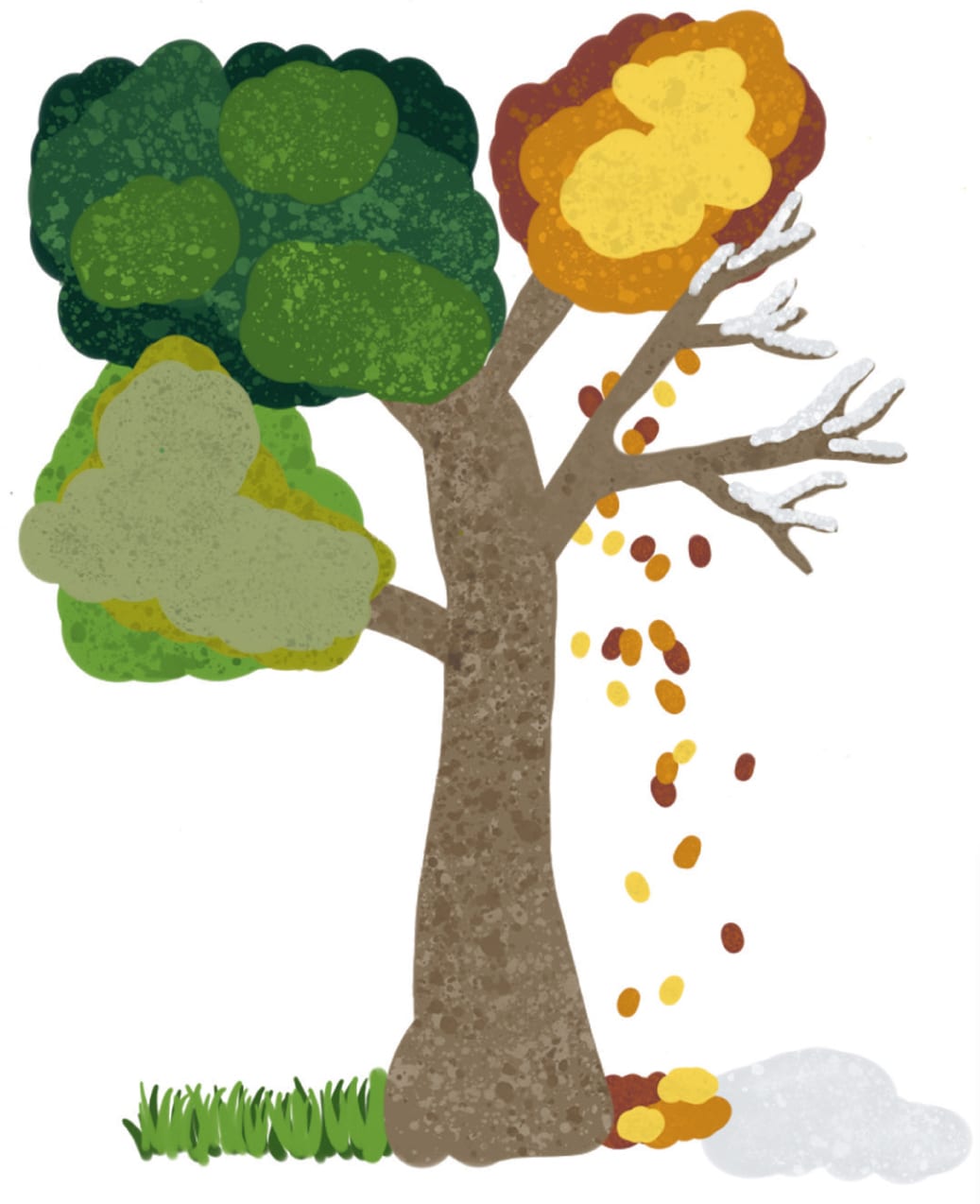
Transpiration
As water is absorbed through the roots, it moves upward through the plant. Eventually some water will escape through the stomata, small openings on the plant’s leaves. This process, called transpiration, cools the plant and helps water and minerals flow into the bottom of the plant through the roots.

Deciduous Trees
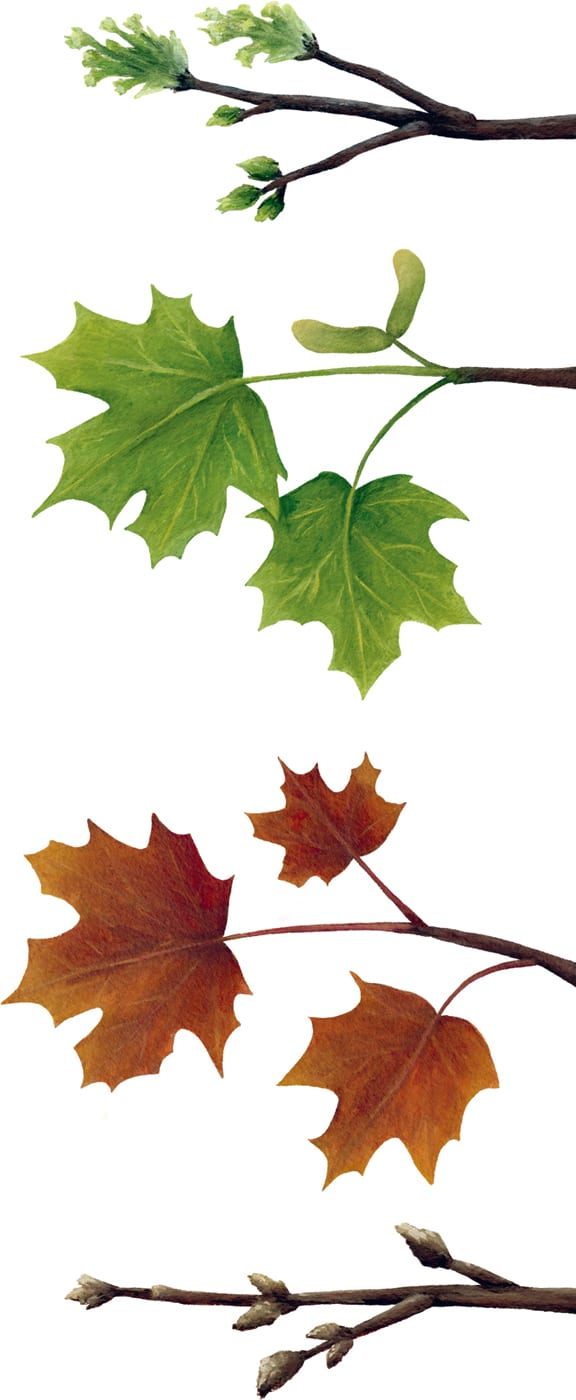
The majestic, broad-leaved trees growing in the temperate forest are called deciduous trees. These trees have leaves that fall every year during the autumn months. This may seem like a disadvantage, but falling leaves actually help the tree survive the cold winter.
During the warm months, when trees like oaks and maples are green, their leaves are making food through photosynthesis. This process uses carbon dioxide and energy from the sun that is captured by chlorophyll, the chemical in the leaves that gives them their green color. As the leaves make food, trees are able to store up energy for winter.
During autumn, leaves stop producing chlorophyll. The lack of green pigment allows other colors in the leaves like reds, yellows, and oranges to be seen. Most deciduous trees release their leaves when nutrients are no longer able to pass through the cells where the leaf meets the branch.
Without leaves, deciduous trees will be able to conserve their energy because they won’t be spending it making food. They will also conserve moisture because most of the trees’ water is lost through their leaves. Leaves that end up on the forest floor will decompose and add nutrients to the soil.
FUN FACT
The word deciduous comes from Latin and means “to fall down,” which is what the trees’ leaves do each autumn.
ANATOMY OF A DECIDUOUS TREE
A deciduous tree’s crown is made up of branches and leaves. The trunk supports the crown. Inside the trunk are different layers of tissue with the heartwood at its center. Made of dead wood, this strong layer is the most supportive. Surrounding heartwood is sapwood, which holds xylem tissue that transports water throughout the tree. Phloem, which moves food throughout the tree, is next. The cortex gives the trunk support and flexibility, so the trunk can sway and bend without breaking. Finally, bark protects the trunk from extreme weather, insects, and other damage. Roots spread out underground to keep the tree standing and to absorb water and nutrients from the soil.

How to Identify a Deciduous Tree While deciduous trees share similar structures, they also display differences in size, leaf and tree shape, and bark patterns. With careful observation, we can see even subtle differences in texture, color, and shape among the different parts of the tree. TREE SHAPE: The shape may be tall and narrow, short and stocky, or anywhere in between. Look at both the crown and the trunk of a tree to get an overall picture of its shape. SPREADING OVAL OPEN ROUND IRREGULAR LEAF SHAPE: Leaves are shaped differently to best capture light for their species so photosynthesis can take place. They may be simple with a single blade or compound with several leaflets around a central stalk. PINNATELY LOBED ELLIPTIC PALMATELY LOBED CORDATE SPATULATE OBLONG ORBICULAR PINNATE BARK TYPE: Bark protects the tree and comes in a variety of colors and textures. Identifying bark is especially useful in winter when the leaves have fallen. SMOOTH SCALES PEELING RIDGES PLATES LENTICELS


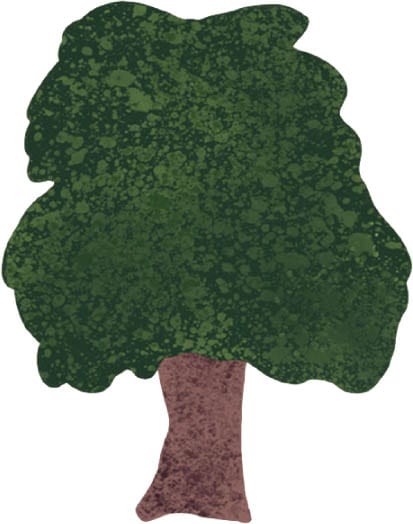

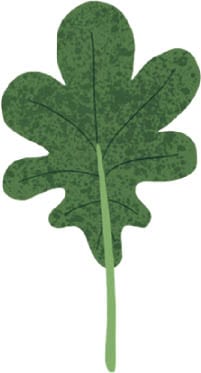







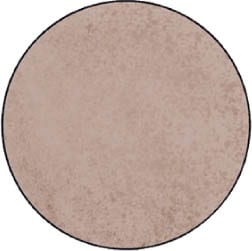



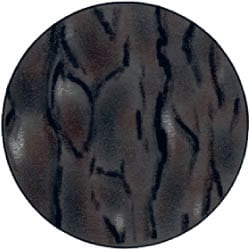
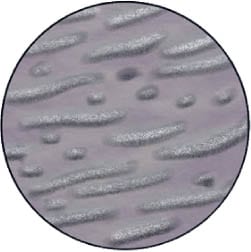
DECIDUOUS VS. CONIFEROUS
DECIDUOUS

Deciduous tree seeds are stored in a fruit, nut, or other covering.
The broad leaves typical of deciduous trees have lots of surface area for absorbing sunlight.
Because deciduous trees do not carry their leaves all year long, they need to make and store up as much food as they can during the warm months.
CONIFEROUS

The waxy coating, or cuticle, on the narrow leaves helps protect them and keep them from losing water throughout the year.
Conifers make cones, and their seeds grow on the cones’ scales.
Many conifers are evergreen and keep their narrow leaves all year long.
Life Cycle of an Oak Tree
Even the mightiest of oaks begins its life as a tiny seed. Oak trees produce male and female catkins, which are like little strings of miniature flowers that hang from their branches. Pollen from the male flowers reaches the female flowers so seeds can form. Acorns, the fruits of oak trees, have seeds inside. When they fall to the ground, many acorns are eaten by animals like turkeys, deer, and squirrels. Acorns that survive may develop roots and shoots and become tiny seedlings. Seedlings grow into young, flexible trees called saplings. After years of growth, the oak will mature. At this time, the tree will begin producing its own acorns, and the cycle will continue.
FUN FACT
Oak trees can be deciduous or evergreen, depending on the species.
FUN FACT

The average lifespan of an oak is 100–300 years!
PLANTS
The temperate forest’s rich soil supplies many types of plants with the nutrients they need to flourish. In turn, the plants provide food, shade, and shelter for forest creatures. And plants help filter the air and provide oxygen for us to breathe through the process of photosynthesis.

Life Cycle of a Fern
Ferns are different from other plants in the forest because the sporophyte, or mature fern plant, makes spores instead of seeds to reproduce.
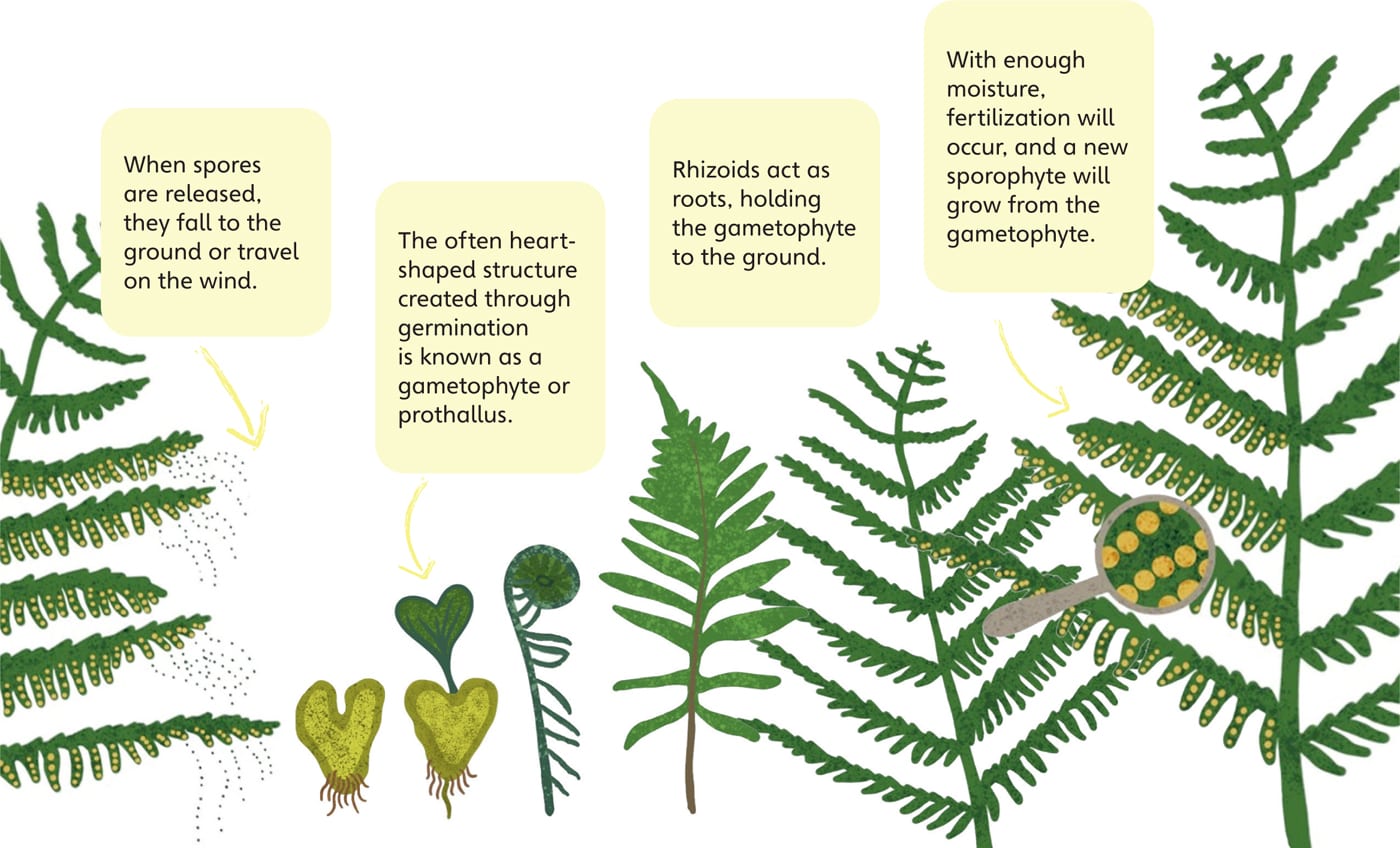
There are more than 10,000 species of FERNS worldwide. This unique plant reproduces using spores and bears long leaves called fronds.
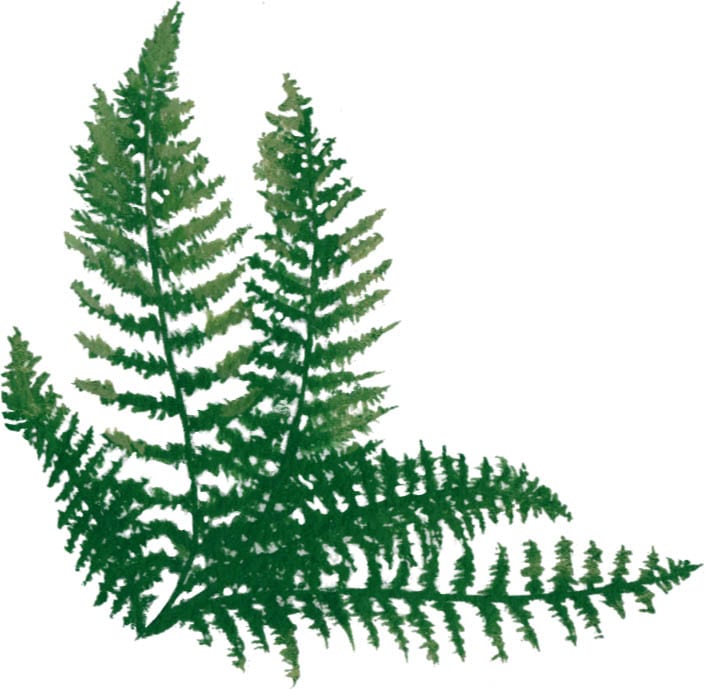
MOSSES cover the forest floor, rocks, and fallen logs. Mosses lack structures to transport water and nutrients, but they can absorb water directly into their cells from their surroundings.

LICHENS are organisms made from a combination of a fungus and algae. The fungus gives the lichen its structure, and the algae cells make food for the lichen through photosynthesis.

Unlike trees, SHRUBS are smaller and have many stems rather than one trunk. Examples of forest shrubs include the azalea and spice bush.

HERBACEOUS PLANTS have nonwoody stems. The leaves and stems of herbs in the temperate forest usually die back in the winter and begin to emerge again in the spring.
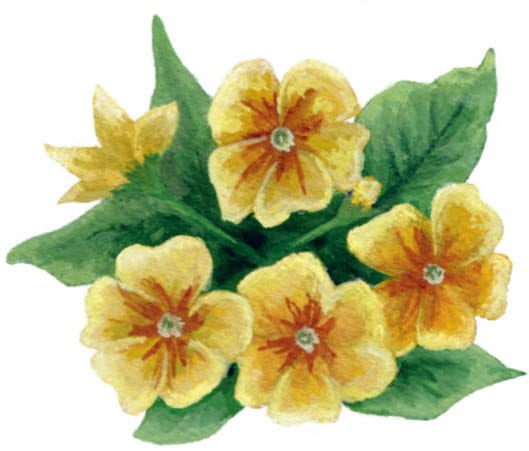
VINES in the temperate forest wrap around trees and other plants for support. They usually have large leaves compared to other parts of the plant.

Forest Fungi
Fungi serve as decomposers, breaking down dead plant and animal matter, recycling nutrients into the soil, and absorbing nutrients for themselves in the process.
FUN FACT
Mushrooms and other fungi are not actually plants! They belong to their own kingdom, separate from plants and animals.

ANIMALS
Most animals that make the temperate forest their home have the ability to camouflage or hide among the trees, plants, and fallen leaves. Furry mammals like bears, squirrels, deer, and foxes inhabit the forest year-round. Some make homes underground or find shelter on the forest floor. Others may climb to higher layers and use tree branches to look for food and move around the forest.
Winter Homes
RACCOON: Raccoons can sleep for longer periods of time to reduce the amount of food they need during the winter season.

BEAR: During winter, bears enter a state of torpor where they sleep more and are less active.

BUMBLEBEE : Queen bumblebees hibernate in small openings in the ground until warm weather returns.
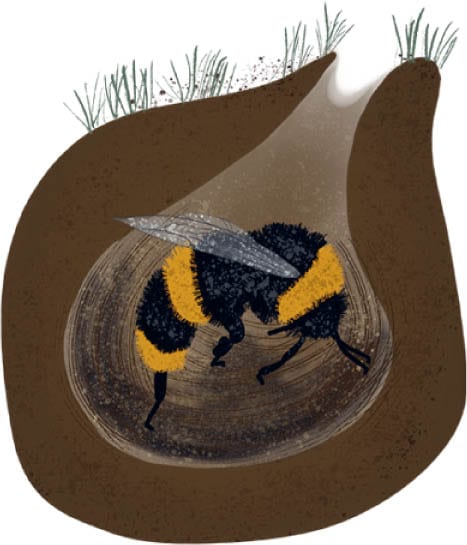
GARTER SNAKE: Snakes and other reptiles brumate under rocks, under brush piles, or in small dens when the weather is cold.
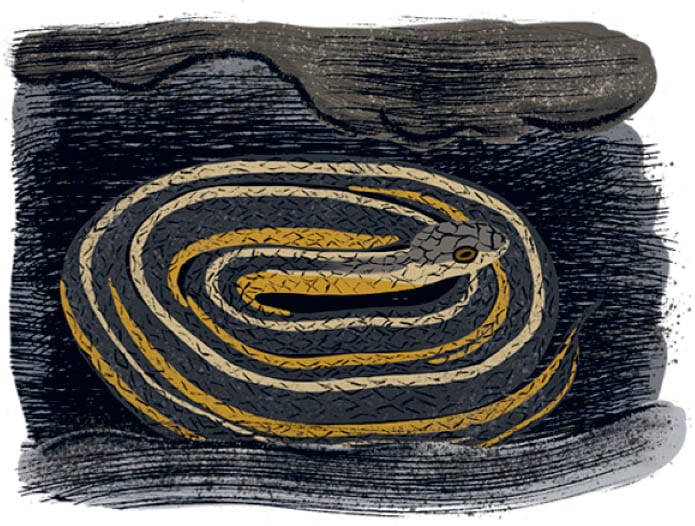
WOODCHUCK: Woodchucks are a true hibernating species, spending the cold season in their winter forest dens.
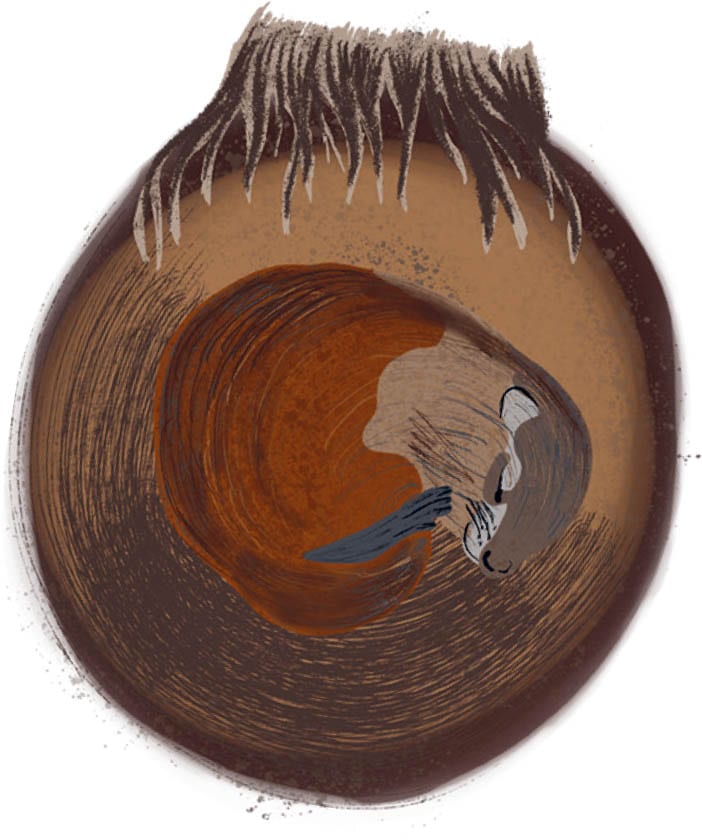
CHIPMUNKS are tiny members of the squirrel family. Chipmunks dig elaborate burrows under the forest floor and hide the entrance beneath rocks and vegetation.

RABBITS AND HARES use their camouflage to blend into their forest surroundings. They can also escape from danger in forest burrows or run at top speeds.

PORCUPINES are found in temperate forests around the world. Some species are agile climbers and can be found in trees, while others make dens among tree roots or rock crevices.
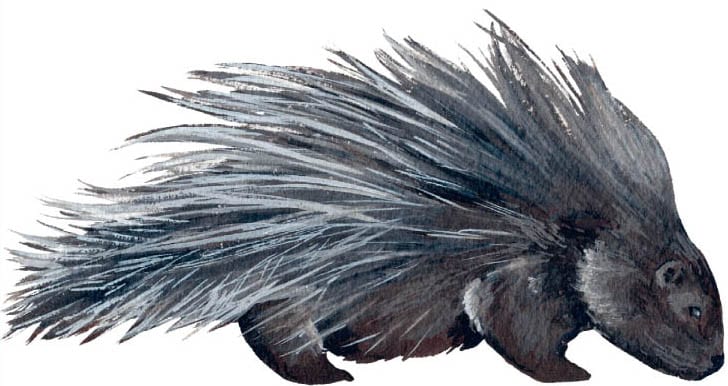
BATS frequent temperate forests, often feeding on insects that live there. Tree cavities, leafy vegetation, or even cave areas are popular spots for bats to roost or hibernate.

GRAY SQUIRRELS are a common forest-dwelling species and spend much of their time high up in trees, where they make their nests in tree cavities or with leaves and twigs.

WEASELS inhabit temperate forests in many parts of the world. They often use dens (built by other animals) at the base of trees or near piles of brush or logs.
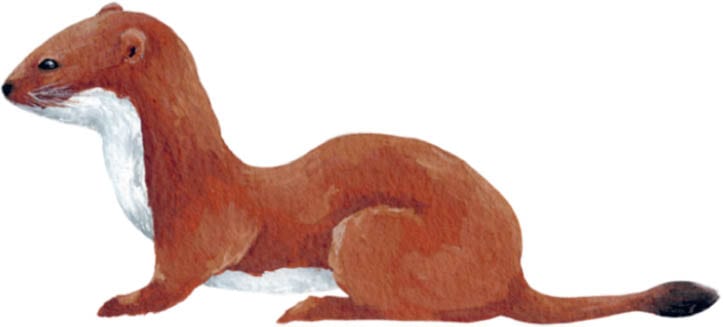
Oh, Deer!
Many deer species, like this elk, are found in temperate forests. Nearly all members of the deer family have antlers. Often crepuscular, they are most active around dawn and dusk, when they forage for grasses, shrubs, and other leafy vegetation.
FUN FACT
Male deer are usually the ones to sport antlers, although female reindeer have them as well.

PREDATORS
For the temperate forest to be a balanced ecosystem, both predators and prey must exist. Predators are animals that hunt and eat other animals, and prey are the animals that are hunted. Predators tend to share common characteristics for hunting; they usually have sharp teeth, sharp claws, keen senses, speed, agility, and strength. Predators keep prey populations in check and help maintain plant populations that would be scarce if herbivore numbers grew out of control.

Forest Food Chain
Predator Adaptation: Claws
- Bears have strong claws that curve downward for gripping, climbing, digging, and tearing things apart.
- Furry paws help bears’ feet stay warm during the cold winters in the temperate forest.
- Their paws can also carry them at speeds of nearly 30 miles per hour (48 kph) for short periods of time.
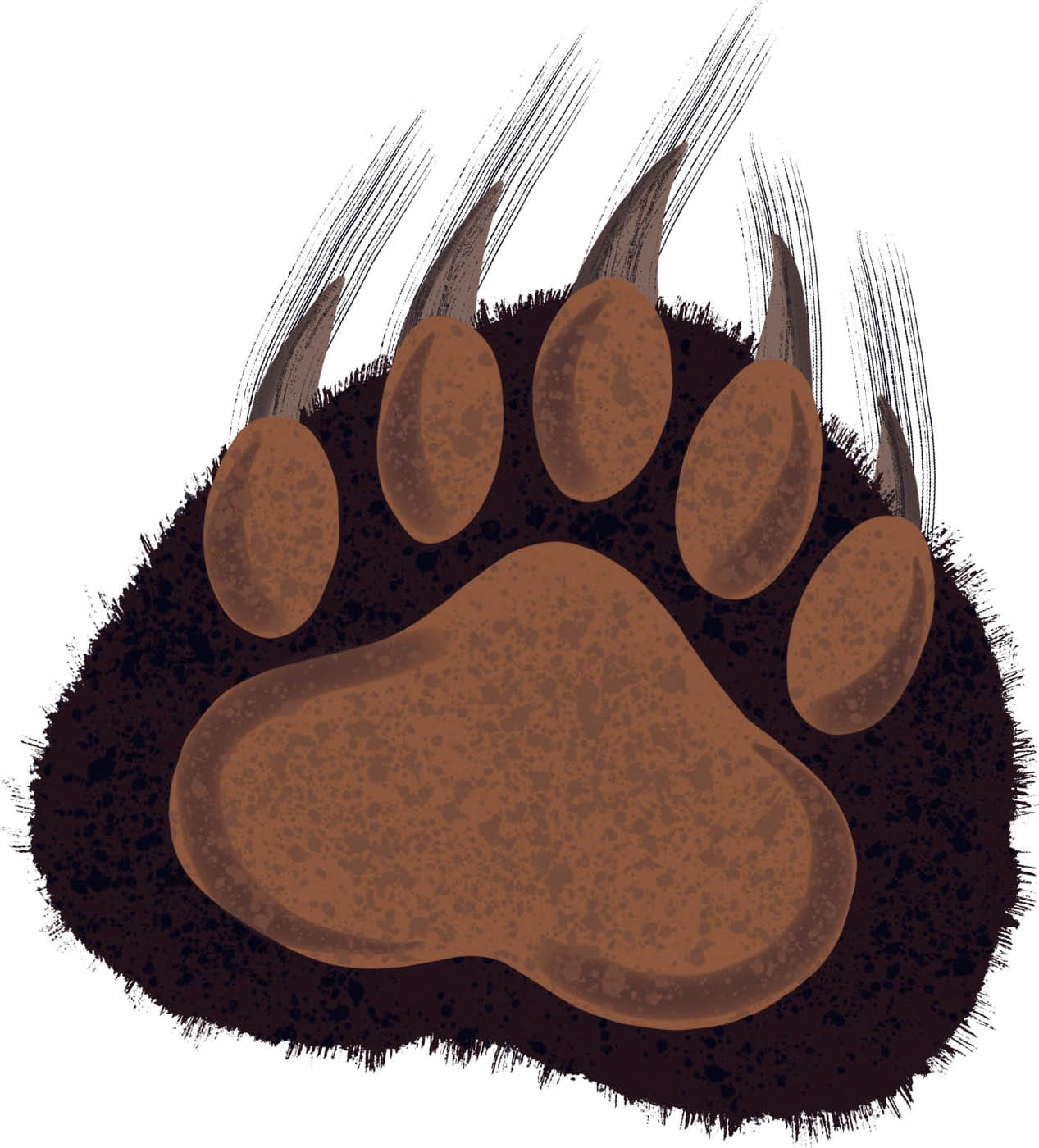
FUN FACT
In winter, when bears spend time in their dens, the protective calluses on their footpads are often shed before spring.
GRAY WOLVES are the largest of the wild dog species. Hunting in packs, they may take down large prey like deer, moose, and elk.
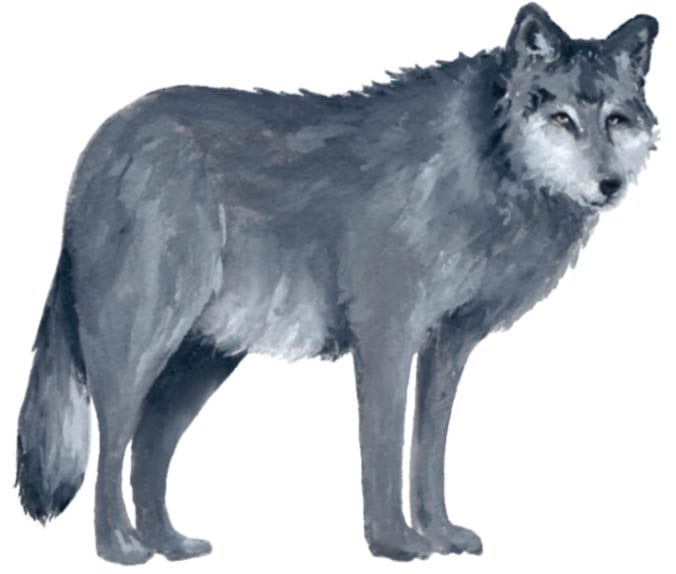
The EURASIAN LYNX prowls the temperate forests of Europe and Asia. Their great climbing ability means they may spend time in trees, but will also seek shelter on the ground.
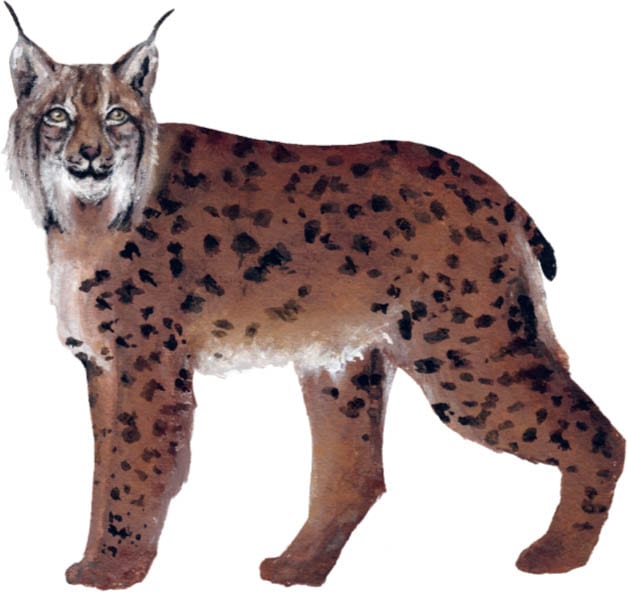
The forest edge provides RED-TAILED HAWKS with shelter, nesting spots, and perches plus a view over open areas, where they can spot prey such as rodents, rabbits, small birds, and reptiles.

RED FOXES eat a variety of small creatures they can find in the forest, including rabbits, rodents, and birds. Their reddish fur helps them camouflage and their senses help them hunt in the dark of night.
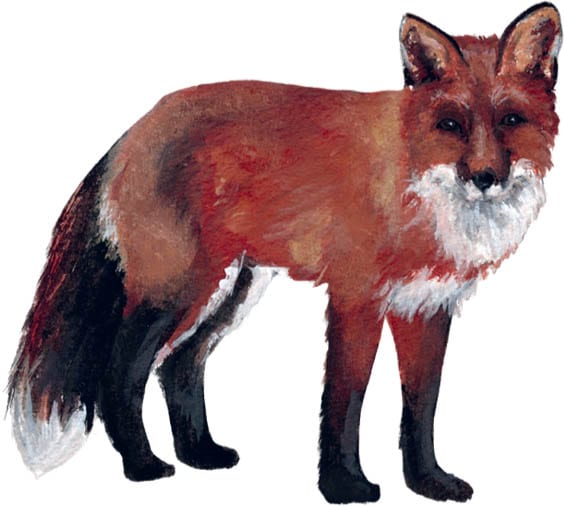
Grrrr! Bears in the Temperate Forest
Some of the largest mammals in the temperate forest, bears have brown and black coloring that provides camouflage among the trees. Bears are usually omnivorous, meaning they eat both plants and animals.
FUN FACT
Hollow trees or caves in the forest make excellent winter dens for bears.

BIRDS
From tiny songbirds to ravenous raptors, a variety of winged wonders make their home in the forest. Some common groups include woodpeckers, turkeys, owls, hawks, jays, finches, and warblers. Insects, seeds, nectar, fruits, and small animals are potential food sources. Tree branches, hollows and cavities, and shrubs welcome nesting birds and provide shelter. Puddles, wetlands, and streams hold water to drink. Some species live in the temperate forest throughout the year, and others are seasonal residents.
FUN FACT
As days become shorter in autumn, some bird species instinctively begin migrating to warmer areas of the world. As the weather warms in the spring, they return to the forest to join the year-round residents.
Types of Bird Nests
Bird nests exhibit almost as much variety as bird species themselves. Materials used to construct nests may include things like mud, twigs, grasses, feathers, fur, string, and spiderwebs. Birds use these materials to build nests of varying shapes in branches, tree cavities, and even on the ground.
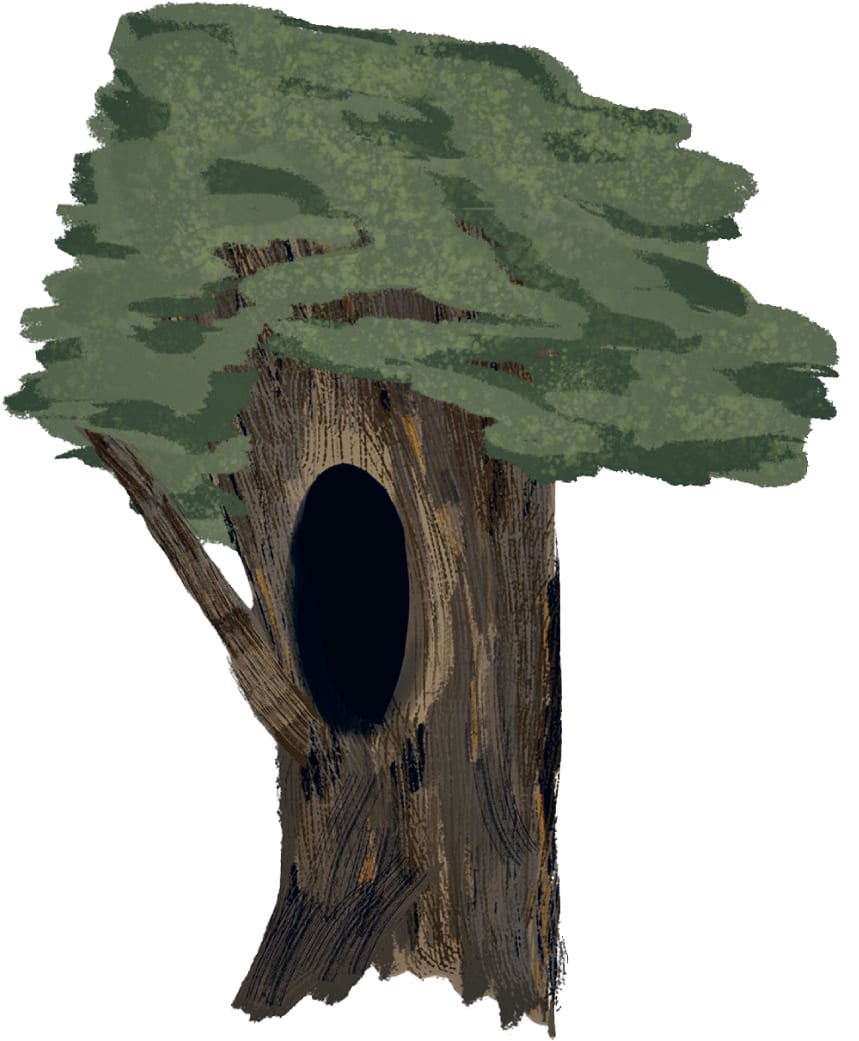
TREE CAVITY

CUP

MOUND

SCRAPE

PENDANT
The TAWNY OWL’S rusty brown markings provide the perfect camouflage for hiding among the branches of large trees. Several subspecies of tawny owls inhabit Europe and Asia.

The HAWFINCH of Europe and parts of Asia has impressive coloring and a large bill for cracking seeds and eating insects. Hawfinches spend much of their time high in the forest canopy.

As a permanent resident of temperate forests across its range in Europe and Asia, the GREAT SPOTTED WOODPECKER feeds on insects in the warm months and more nuts and seeds during winter.

EURASIAN BLACKBIRDS feed on fruits, insects, and worms. These birds build nests of mud, leaves, and grasses in dense shrubs or trees.
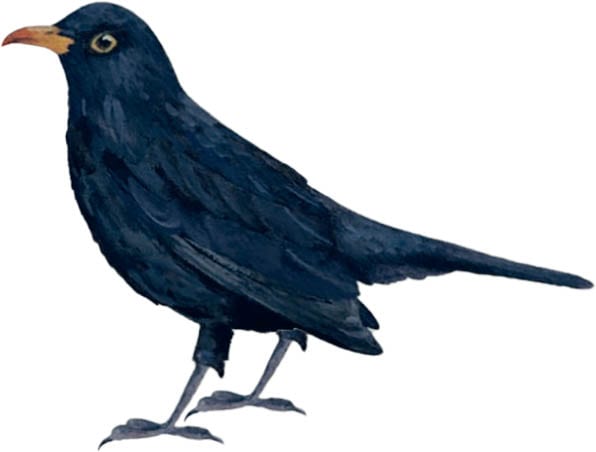
The tiny RUBY-THROATED HUMMINGBIRD is a migratory species. These birds spend their winters in the tropics, where the weather is warm and there is nectar to drink and insects to eat.
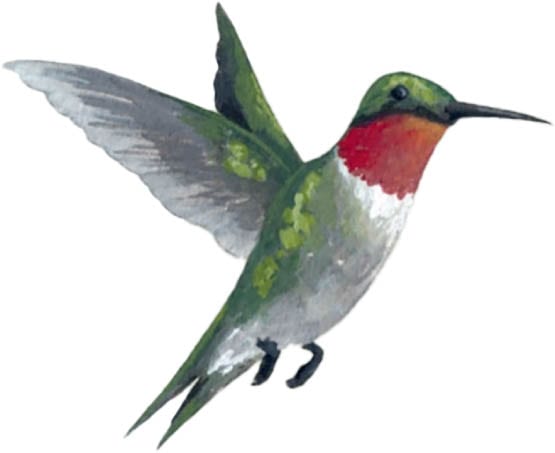
WILD TURKEYS are a common sight in many temperate forest ecosystems across North America, often near open fields. They feed on plants and insects on the forest floor.
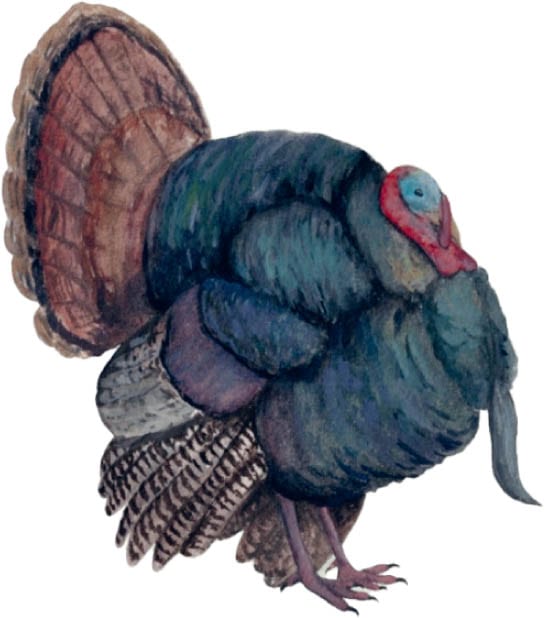
Songbirds of the Forest
Songbirds like this great tit and its relatives are common forest residents. They use their “voices’’ primarily to communicate with each other. They may try to attract a mate or defend their territory with complex tunes. Shorter, more direct calls are used to signal alarm.

REPTILES AND AMPHIBIANS
Reptiles and amphibians spend much of their time on and near the temperate forest floor. This provides them the cover they rely on for survival.
Reptiles like snakes, lizards, and turtles have scales covering their bodies. They breathe air through a single lung or pair of lungs like people. Amphibians like frogs, toads, and salamanders share many similar characteristics but have skin instead of scales.
Reptiles and amphibians are ectothermic, or cold-blooded. This means their body temperature changes with the surrounding temperature. Because of this, reptiles and amphibians are not active during the cold season in the temperate forest.
FUN FACT
Reptiles and amphibians brumate, or sleep, in a protected place underground or in a log or leaf litter to stay warm enough to survive the chilly winter temperatures. When the temperature warms up, they will become active again.
Amphibian Life Cycle
Often frogs, toads, and salamanders hatch from jelly-like eggs looking almost like tiny fish. They even have gills to breathe. You may know these larvae as tadpoles. They wiggle through the water searching for algae and other vegetation to eat. To prepare for the big move to life on land, the larvae eventually develop legs and lungs.

The ORNATE BOX TURTLE is adapted to life near open areas in the North American temperate forest and forest edges, so they are able to find food as well as sunlight for basking and shelter on the forest floor.
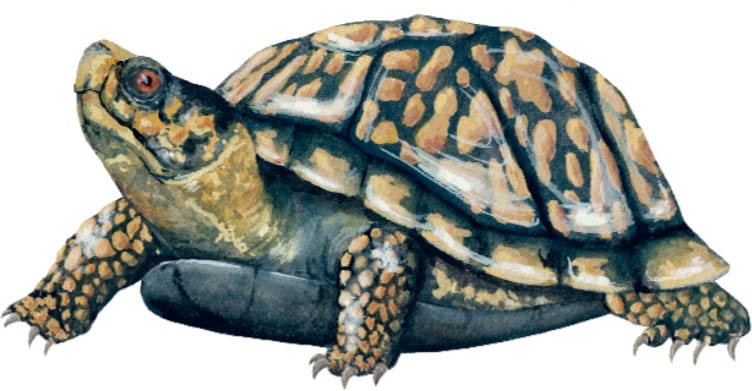
The FIVE-LINED SKINK prefers the temperate forest of eastern North America. Brush piles, rocks, and leaves make safe hiding places. Plus, stumps and logs provide sites for them to sunbathe.

Also known as the SMOOTH NEWT, the common newt inhabits temperate forests in Europe and parts of Asia. They live near forests most of the year, but will migrate to nearby ponds in the spring for breeding.
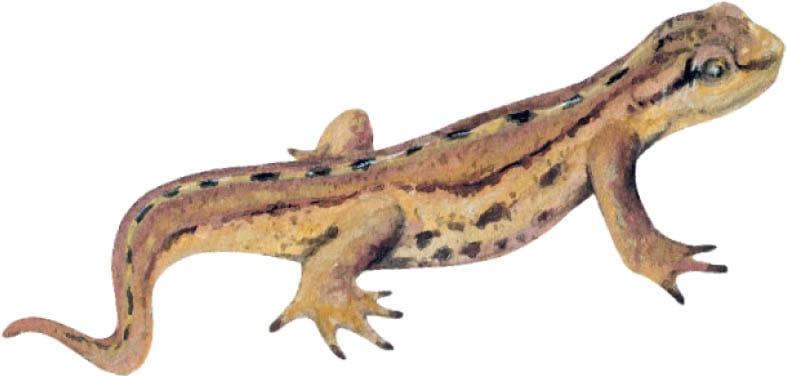
The AESCULAPIAN SNAKE makes its home in temperate forests across Europe and parts of Asia. This species can blend into the forest floor or climb high in the trees.
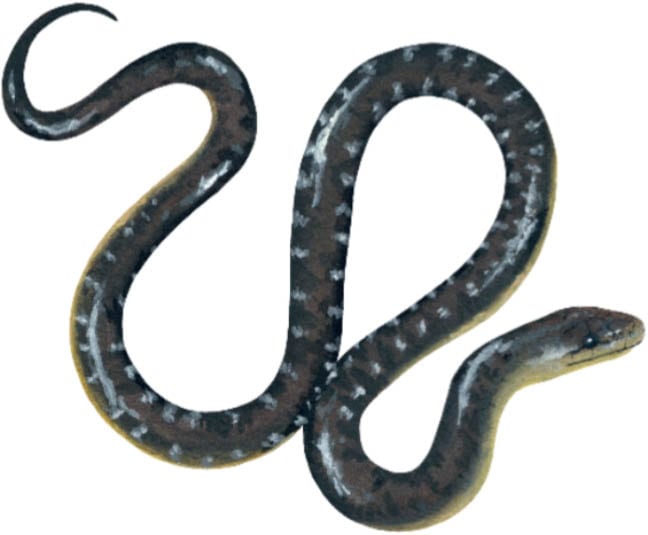
Leaps and Bounds
Frogs and toads are closely related, but there are some differences between them.
- Both lay their eggs in aquatic environments like ponds, wetlands, and slow-moving streams in the forest. Toads usually lay strings of eggs, while frogs’ eggs are clumped together.
- Frogs use teeth to grasp their prey. However, toads are toothless and use their sticky tongues instead.
- Frogs can leap with their long rear legs, and toads’ rear legs are good for shorter hops.
- Frogs’ rear feet have webbing, and toads’ feet are not webbed.
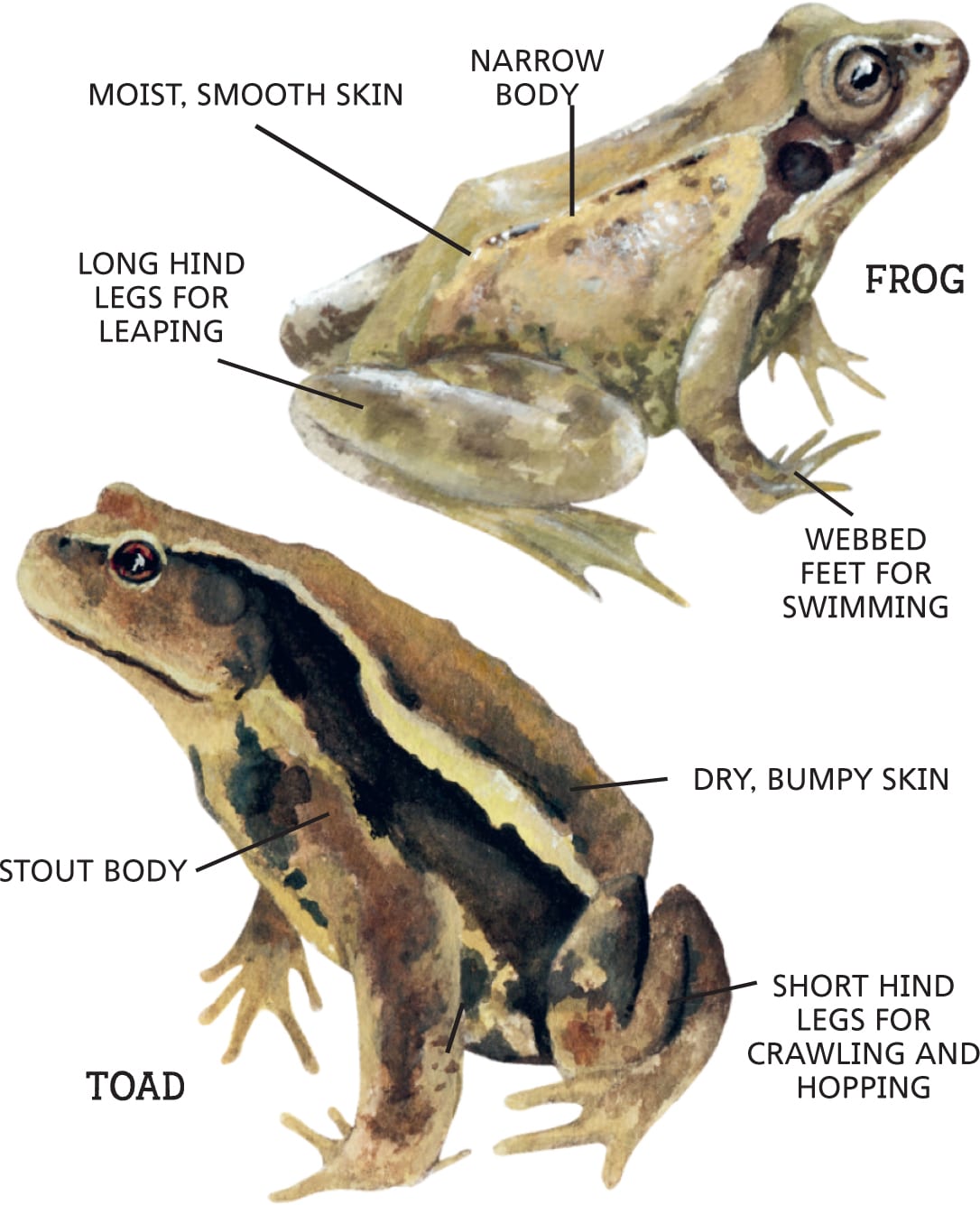
INVERTEBRATES
Spiders, insects, and snails, oh my! Invertebrates crawl, burrow, wiggle, and fly. These animals do not have a backbone or spinal column like you do. They often have an exoskeleton, which is a hard covering that protects them.
Some invertebrates, such as spiders and centipedes, are predators. Earthworms and beetles are decomposers, breaking down the fallen leaves, dead creatures, and animal waste on the forest floor.
Bees and butterflies are pollinators, flying from flower to flower in the understory. And almost all invertebrates are prey species to larger invertebrates and many animals of the forest.
Invertebrates are most active in the warm months. During winter, they may experience diapause, which is like the invertebrate version of hibernation.

A Tangled Web
Many spiders of the temperate forest make webs to catch prey.
Cobwebs or tangled webs may appear chaotic, but they have sticky “catching threads” to trap prey.
Classic wheel-shaped orb webs can catch over 200 insects each day.
Funnel web sheets are used to trap prey near the ground while the spider hides inside a funnel in the middle of the web.
Some sheet webs are constructed without a funnel and hang like a hammock between plant stems, blades of grass, or tree branches.

Found among fallen leaves or under rocks in the temperate forest, PILLBUGS come out at night to feed. When disturbed, they roll into a ball to protect themselves.

Native to Europe and Asia, the SEVEN-SPOT LADYBIRD has been introduced to North America. Unlike many insects, it does not blend into the greens and browns of the temperate forest.
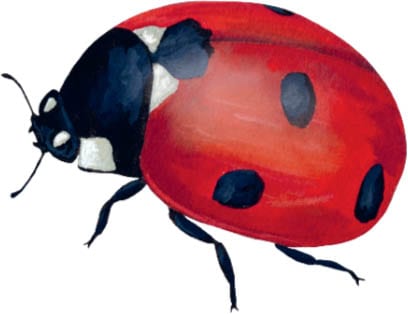
EARTHWORMS are common around the world. They range in size from 1 inch (2.5 cm) to more than 6.5 feet (2 m). In the temperate forest, the shade and leaf litter help keep them from drying out.
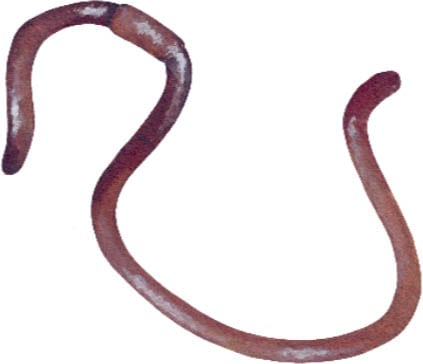
Each hind wing on the POLYPHEMUS MOTH has a giant eyespot to confuse predators. These magnificent moths live in temperate forests around North America.

The ROMAN SNAIL is a large species of land snail originally from Europe, but introduced all around the world. Temperate habitats are ideal because this species will dry out if conditions are too hot and dry.

LONGHORNED TICKS are native to eastern Asia and have been introduced to other parts of the world. They prefer temperate forests and open grassy areas.
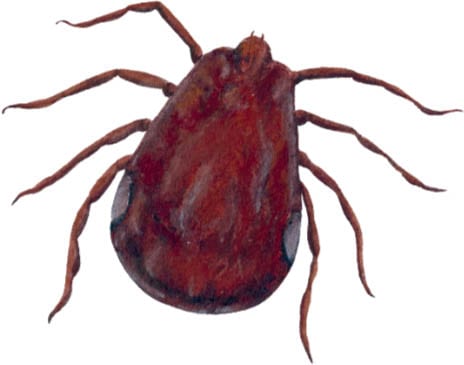
The Buzzzz
Thousands of species of bees buzz around temperate forests. Hives serve as a home for a honeybee colony. It is where they raise their young, store food, overwinter, and protect the colony’s queen.

ACTIVITIES
Chapter 1 took you through the world’s temperate forests, where you investigated the plant and animal species that make their home in this dynamic biome. Now, you will put your knowledge to use by venturing outdoors to experience trees, leaves, fungi, animals, and more in the wild!
Nature Journal
Choose a temperate forest plant or animal you would like to learn more about. Through careful observation and research, discover what the animal or plant looks like, so you can draw a picture of it in your nature journal. Then you can add information about it, such as its habitat, size, color, and adaptations for survival.
Hidden Hues
You learned deciduous trees have green chlorophyll in their leaves to capture sunlight for photosynthesis. In autumn, the other hues shine through when leaves stop producing chlorophyll. Using chromatography, this experiment will show these colors.
- 1. Gather supplies: deciduous tree leaves, scissors, glass jar, rubbing alcohol, coffee filter, tape, and pencil.
- 2. Tear leaves into small pieces until you have covered the bottom of the jar.
- 3. Pour rubbing alcohol over the leaves, enough to cover them plus a little extra.
- 4. Cut a strip from the middle of your coffee filter about ¾ inch (2 cm) wide and the length of the entire filter. Tape one end of the filter strip to the middle of the pencil at a perpendicular angle.
- 5. Rest the pencil on top of the jar, allowing the filter strip to just barely dangle into the rubbing alcohol. Roll the filter strip around the pencil if it’s too long.
- 6. Check on your filter strip the next day to see your results.
- 7. Repeat steps 2 through 6 with leaves from different tree species and compare results.
You probably notice several stripes of colors on your filter paper. As different color pigments found in the leaves dissolved in the rubbing alcohol, they traveled up and spread onto the filter paper at different rates.

Broad Leaf and Needle Leaf Comparisons
Both broad leaves and needle leaves help their trees make food through the process of photosynthesis, but they have different adaptations to do so. While you’re on the forest trail, you can observe both types of leaves to compare and contrast them. Or you may want to collect fallen leaves and take them home to observe. Having a pocket microscope or magnifying lens can help you see more of their unique features. Draw your observations in your nature journal, and make a Venn diagram or T-chart to help you record the similarities and differences between the leaves.
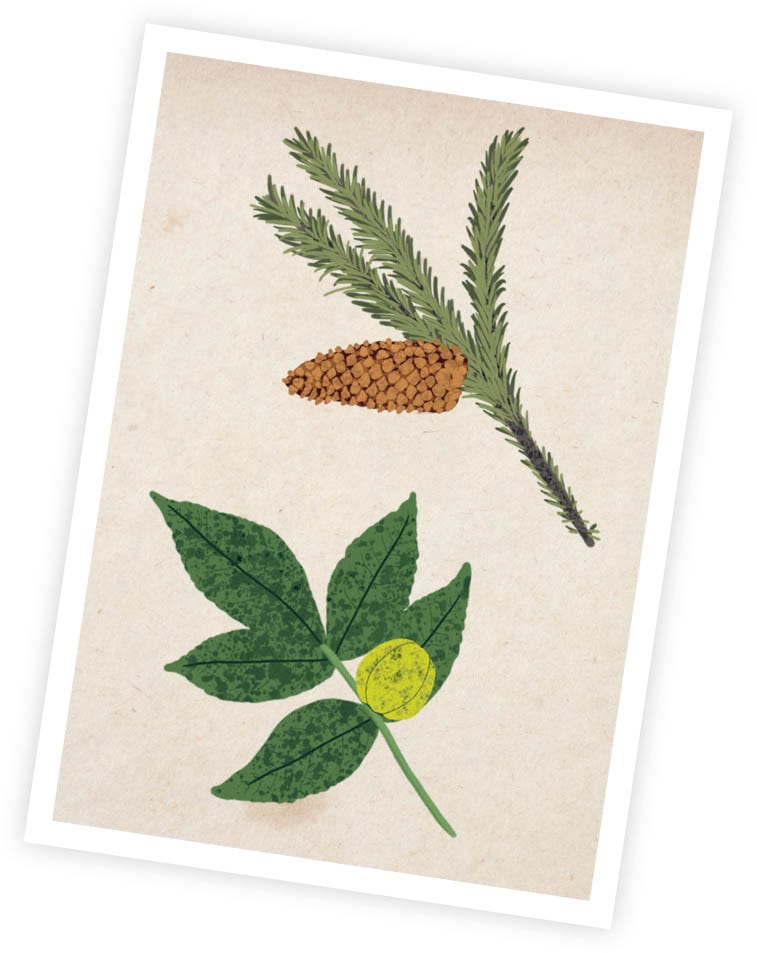
Transpiration Demonstration
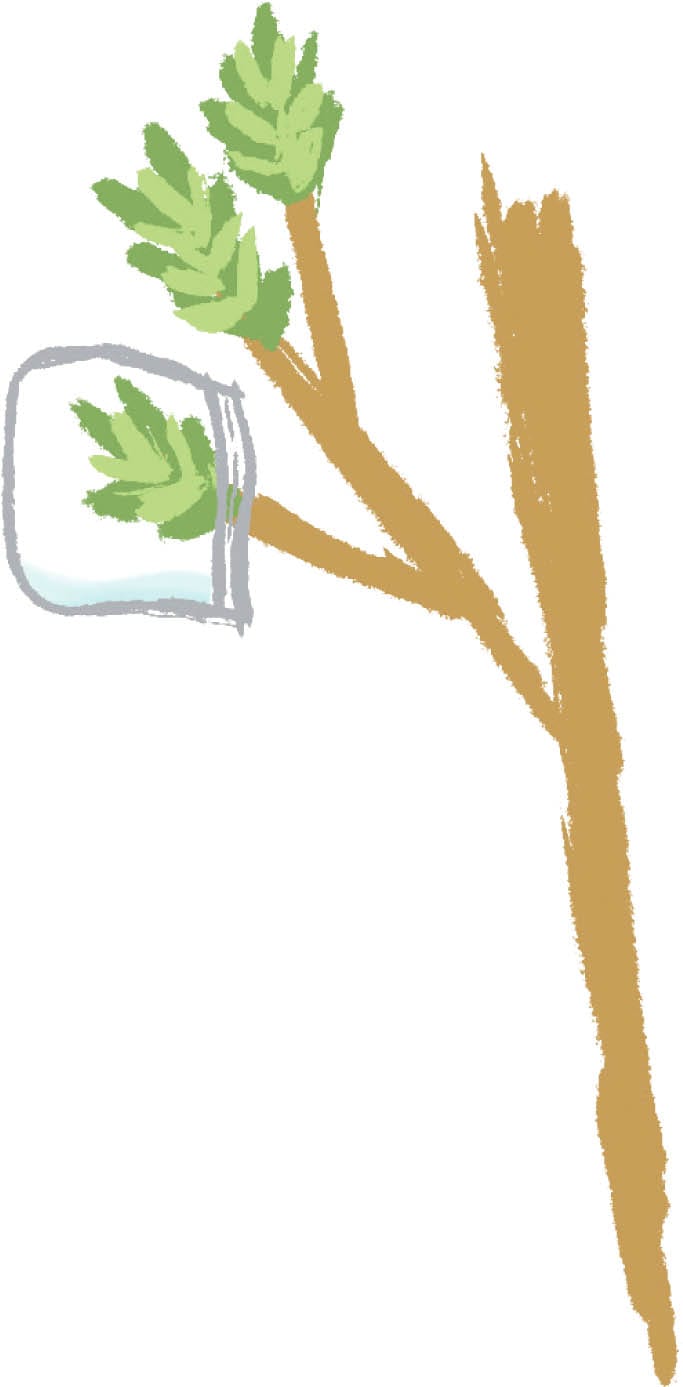
Transpiration is the process by which a tree releases water into the air through tiny openings on the underside of its leaves. This helps cool the tree and pull water up to the leaves from the roots. You can see this process at work by conducting a simple demonstration.
- 1. Begin by collecting your supplies: a sandwich-size plastic baggie, a tree with broad leaves, a rubber band, your nature journal, a pencil, and colored pencils. (You can use a houseplant if you don’t have access to a tree.)
- 2. Put the plastic baggie at the end of a branch with leaves on it. On a sunny day, secure the baggie over at least one leaf on the tree branch. Tie off the open end of the baggie with the rubber band, so it is snug against the branch and not a lot of air can move in or out.
- 3. In your nature journal, draw and color in your demonstration setup and write down the steps you took to complete it.
- 4. After a couple of hours, return to your baggie and make your observations. Does the baggie look the same, or do you notice something different? Record your observations in your nature journal.
- 5. Chances are there were some tiny water droplets or moisture on the inside of the baggie. Why do you think this occurred? Use the word transpiration as you answer this question.
Make Tracks!
While animals are plentiful in the forest, it may be hard to see them because of their ability to hide when they sense us nearby. But evidence of animal life is all around, and you can train yourself to find it. Using your nature detective skills, look for animal footprints, scat (poop), fur, dens, bedding areas, antler rubbings, teeth marks, and more when you’re out in nature. You can keep track of these markings by taking photos, drawing them in your nature journal, or making lists of what you have seen.
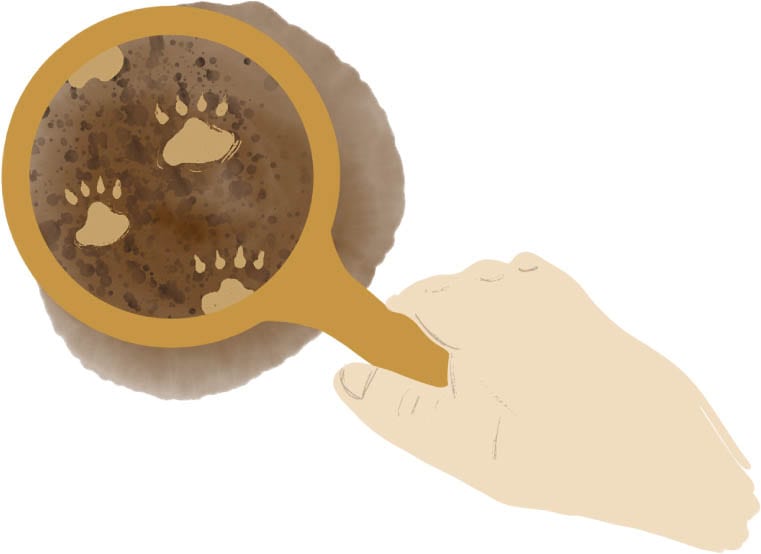
SCAT

WOLF

VULTURE

OPOSSUM

COUGAR

MOOSE
FOOTPRINTS

RABBIT

LYNX

BEAR

DEER
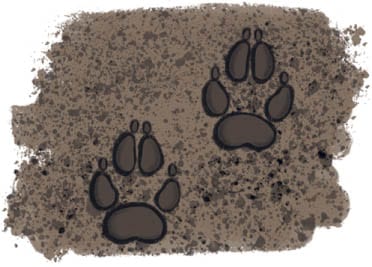
FOX

CHIPMUNK
OTHER EVIDENCE
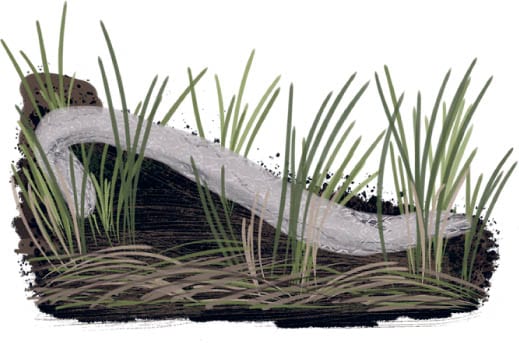
SNAKE SHED

OWL PELLET
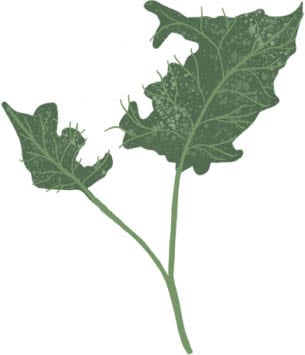
PARTIALLY EATEN VEGETATION

FUR

WOODPECKER HOLES
Bark and Leaf Rubbings
Head out on your forest adventure, and be sure to bring your nature journal or a notebook along with crayons or colored pencils. Use these simple tools to make rubbings of leaves and bark patterns on trees in the forest. Simply hold a piece of paper against the leaf or bark, and color on the paper using the side of your crayon or the edge of the colored pencil tip. An impression of the leaf or bark will appear on the paper as your crayon or colored pencil rubs over it. Be sure to try different leaf shapes and different bark textures. Using an identification book or app may help you label your rubbings with the correct tree or plant name.

Painting with Evergreen Branches
Evergreen branches can be used as paintbrushes! Look for a fallen branch on the ground with needles still attached. You can use it “as is” by holding onto the branch and painting with the needles, or you can remove the needles and bundle them together using a rubber band or heavy-duty tape. Dip the needles in paint, and create your masterpiece.

Did You Know?
As autotrophs, plants must make their own food. They can’t run to the pantry or open the fridge when they need nutrients. Photosynthesis provides plants with the food they need to survive, so they, in turn, are able to provide food for animals. Plants take in carbon dioxide and water from their surroundings. A chemical called chlorophyll, which gives plants their green color, also helps them absorb sunlight. Sunlight provides the energy plants need to make sugars from the carbon dioxide and water they have taken in. During photosynthesis, plants also create oxygen they are able to release into the atmosphere. The oxygen moves out of the plants through tiny openings in their leaves.
